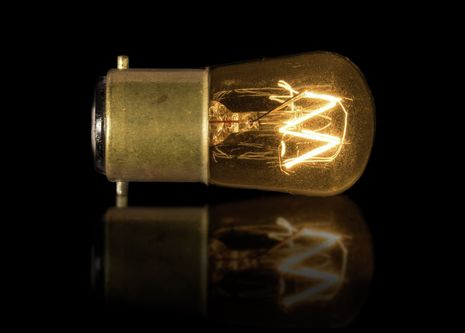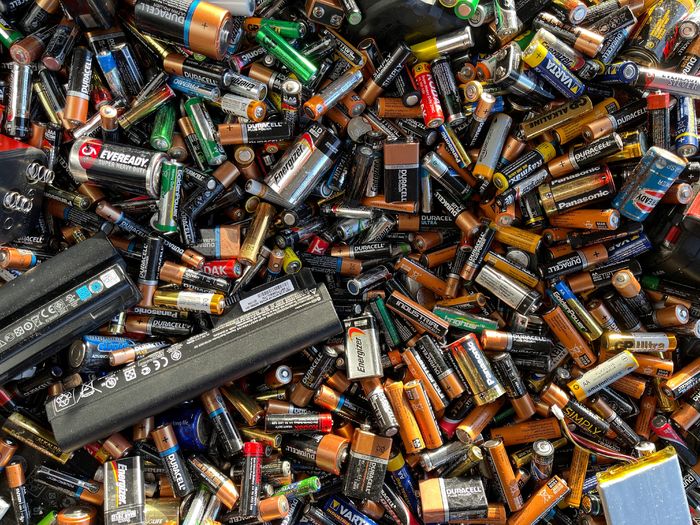Lighting for a cleaner, more energy-efficient future
From incandescent light bulbs to organic light-emitting diodes, Evelyna Wang explores the history and future of energy-efficient lighting

Lighting in residential and commercial buildings constitutes a significant proportion of energy consumption and electricity costs in the UK. As such, replacing traditional incandescent or halogen lighting with more energy-efficient options can greatly reduce net carbon emissions and help promote a cleaner future. In a single home, the cumulative effect of replacing all light bulbs is roughly comparable to driving 200 fewer miles in a standard internal combustion engine vehicle per year. Over the last 15 years, switching to more efficient lighting and appliances has led to an estimated 100 TWh reduction in fossil fuel energy.
The main inefficiency in traditional incandescent light bulbs is the loss of energy as heat. In a lightbulb, an electric current flows across a resistive filament, heating the filament until it begins to glow. Only about 5% of the electricity is converted into visible light, while the remaining 95% of energy is lost as waste heat. This heating also degrades the filament and greatly limits the lifetime of incandescent lightbulbs. In an attempt to improve the efficiency of incandescent lighting, halogen lights were developed. Halogen lights operate using the same mechanism as incandescent lights, but the bulb is filled with a small amount of iodine or bromine gas which promotes a chemical reaction that increases the lifetime of the filament and improves its overall efficiency.
“The discovery of the blue LED was later awarded the Nobel Prize in Physics in 2014”
The next type of lighting designed to greatly improve efficiencies were compact fluorescent lamps (CFLs). These typically have 10-15 times longer lifetimes and use 60-80% less energy compared to incandescent lights. When an electric current is applied, gas in the bulb emits ultraviolet light, which is then converted to visible light by a fluorescent coating. Although they are slightly more expensive than incandescent bulbs, the improved lifetime and reduced energy consumption result in an overall net saving. Currently, CFLs remain one of the best options for energy-efficient lighting.
That said, the current technology champion for energy-efficient lighting is light-emitting diodes (LEDs). Advances in semiconductor physics have led to the development of many different types of LEDs – paving the way for more efficient and brighter lighting with even longer lifetimes. LEDs are solid-state devices, meaning no gaseous components are involved, unlike in incandescent or CFL bulbs. Applying a voltage to an LED causes a flow of electric current into the device. The flowing electrons change from a high energy state to a lower energy state and the energy loss results in the emission of light. These energy states determine the colour of the light emitted and depend on the type of semiconductor used. For instance, early LEDs used Gallium-Arsenide as the semiconductor material, resulting in infrared LEDs. These are still used in many types of short-distance communication, such as in remote controllers. In 1994, the first high-brightness blue LED was developed using Indium-Gallium-Nitride. This development was particularly important for lighting applications because it made white LEDs possible. The discovery of the blue LED was later awarded the Nobel Prize in Physics in 2014.
“LEDs are already the underpinning technology in coloured displays on portable devices such as smartphones”
LEDs are extremely compact and highly efficient at converting electricity to light, which means very low operating currents can be used. The result is a 90% reduction in energy consumption compared to incandescent bulbs, as well as lifetimes of 25-30 years when LEDs are used in lighting applications. Additionally, LEDs use direct current inputs, meaning they can be easily powered by batteries and provide wireless lighting even in spaces without reliable electricity. Direct currents also mean no warm-up time is required and lighting intensities can be dimmed – providing more control and versatility for consumers.
The advent of smart devices pairs nicely with LEDs as well, enabling smart lighting features to be controlled by mobile devices or various sensors, further increasing the efficiency. Although initial costs remain higher compared to CFLs, as costs continue to decrease and pressure from regulatory bodies to switch to more energy-efficient options increases, LEDs are likely to become the dominant player. Moreover, LEDs are already the underpinning technology in coloured displays on portable devices such as smartphones and computers. It is little wonder that futuristic science fiction aesthetics often showcase these bright LED lights.
The next generation of LEDs and a rising player in mobile technologies is the organic LED (OLED). In principle, OLEDs operate similarly to LEDs, but they use carbon-based materials, enabling different device fabrication methods for thinner, larger and more flexible designs. With further industrial development, OLEDs offer the possibility of diffusion over larger areas and softer lighting. While these devices are not yet typically used in lighting applications, they are increasingly common in mobile phones, laptops and TVs, enabling beautiful and efficient colour displays.
Finally, not only has the development of LEDs led to major improvements in energy efficient lighting and display technology in mobile devices, recent studies indicate that LEDs increase our exposure to blue light. The effect of blue light on the brain has been linked to many interesting phenomena, including increased attention spans, affected moods and disrupted circadian rhythms. Overall, improvements in lighting technology have led to a drastic increase in artificial light exposure. Looking to the future, further improvements have the potential to dramatically impact human wellbeing and illuminate a cleaner, more energy-efficient future.
 News / SU reluctantly registers controversial women’s soc18 December 2025
News / SU reluctantly registers controversial women’s soc18 December 2025 Features / Should I stay or should I go? Cambridge students and alumni reflect on how their memories stay with them15 December 2025
Features / Should I stay or should I go? Cambridge students and alumni reflect on how their memories stay with them15 December 2025 News / Dons warn PM about Vet School closure16 December 2025
News / Dons warn PM about Vet School closure16 December 2025 News / Cambridge study finds students learn better with notes than AI13 December 2025
News / Cambridge study finds students learn better with notes than AI13 December 2025 News / CUP announces funding scheme for under-represented academics19 December 2025
News / CUP announces funding scheme for under-represented academics19 December 2025









